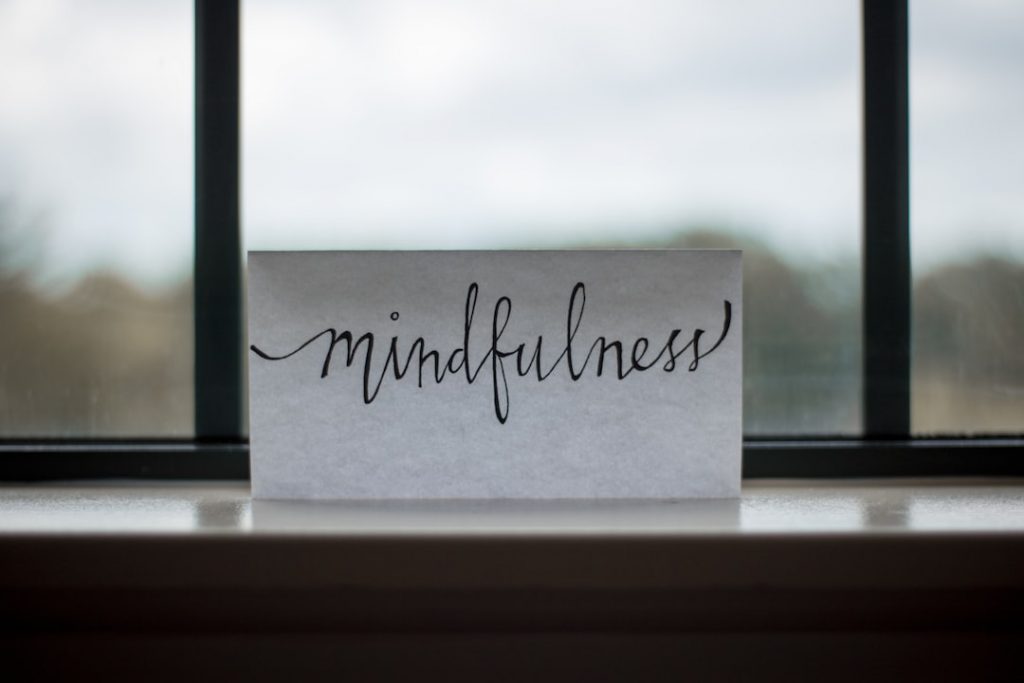Mindful Solutions: Combating Burnout and Cultivating Well-being in the Workplace

This article provides an overview of burnout and the role of mindfulness in managing it, including understanding burnout symptoms, incorporating mindfulness techniques into daily routines, and the benefits of mindfulness for mental well-being.
Overview of Burnout and Mindfulness
Burnout, as classified by the World Health Organization, is a state of chronic workplace stress that has not been effectively managed, leading to symptoms like increased cynicism, irritability, and difficulty concentrating. This can have detrimental effects on both professional and personal lives, affecting productivity and overall well-being. Mindfulness, as a practice, involves focusing on the present moment without judgment. It can serve as a powerful tool in managing burnout and alleviating stress by promoting self-awareness and emotional regulation.
Individuals experiencing burnout may find mindfulness techniques such as breath awareness and meditation helpful in redirecting their focus from work-related stressors to their immediate sensory experiences. This shift in attention can provide a much-needed mental break and create a sense of calm and clarity, ultimately aiding in the management of burnout symptoms. Incorporating mindfulness into daily routines can help individuals become more attuned to their physical and emotional needs, enabling them to recognize early signs of burnout and take proactive steps to address them. This approach empowers individuals to cultivate a greater sense of self-compassion and resilience in the face of workplace challenges, contributing to a more sustainable work-life balance.
Mindfulness offers individuals the opportunity to develop a deeper understanding of their emotional responses to workplace stress, leading to enhanced self-awareness and emotional regulation. By integrating mindfulness practices into their daily lives, individuals can cultivate a greater sense of resilience and cope more effectively with the challenges of their professional roles. Mindfulness not only provides a means of managing burnout but also fosters a more compassionate and empathetic approach to self-care, enabling individuals to navigate workplace stress with greater ease and grace. This shift in mindset can have profound effects on an individual’s overall well-being, promoting a more balanced and sustainable approach to professional life.
Understanding Burnout
Burnout is a complex phenomenon that manifests in three distinct subtypes: frenetic, under-challenged, and worn-out, each with its own set of characteristics and challenges. Frenetic burnout is experienced by individuals who are highly committed to work and neglect to create boundaries, leading to a sense of overwhelming exhaustion and a lack of control. Conversely, under-challenged burnout is experienced by individuals who feel indifferent about work and receive little feedback or acknowledgment, resulting in feelings of stagnation and disengagement. Finally, worn-out burnout is experienced by individuals who feel disengaged and disregard the responsibilities of their position, often leading to emotional exhaustion and a lack of motivation.
Understanding the symptoms of burnout is crucial for individuals to recognize when they are experiencing it. Physical symptoms such as chronic fatigue, increased illness, and physical stress or tension can take a toll on one’s overall well-being. Mental symptoms, including increased anxiety, depression, and chronic pessimism, can further exacerbate the impact of burnout on an individual’s personal and professional life. It’s essential to acknowledge and address these symptoms to prevent them from escalating and causing long-term harm. By recognizing the specific characteristics and symptoms of burnout, individuals can take proactive steps to manage and overcome this challenging state of chronic stress and exhaustion.
The recognition of burnout subtypes enables individuals to identify the specific challenges they may be facing in their professional lives. For instance, an individual experiencing frenetic burnout may benefit from establishing clear boundaries and practicing mindfulness to regain a sense of control and balance. On the other hand, someone dealing with under-challenged burnout may find value in seeking opportunities for growth and recognition in their work environment, fostering a renewed sense of engagement and purpose. By understanding the distinct characteristics of each subtype, individuals can tailor their approach to managing burnout more effectively, leading to a more targeted and sustainable resolution of their symptoms.
Symptoms of Burnout
The symptoms of burnout can be quite debilitating, impacting individuals physically and mentally. Physically, burnout can lead to chronic fatigue, increased susceptibility to illness, and heightened physical stress or tension, all of which can take a toll on an individual’s overall well-being. For instance, chronic fatigue may result in a lack of energy to engage in activities that were once enjoyable, while heightened physical stress can contribute to muscle tension and discomfort, further exacerbating feelings of exhaustion and unease.
On the mental front, burnout can give rise to a range of distressing symptoms such as heightened anxiety, persistent feelings of depression, and a pervasive sense of chronic pessimism. These mental symptoms can significantly impact an individual’s ability to perform effectively in their professional capacity, leading to decreased productivity, difficulty concentrating, and a general sense of disengagement. For example, heightened anxiety can lead to a sense of being overwhelmed and an inability to focus on tasks at hand, while persistent feelings of depression can impact motivation and enthusiasm for work-related responsibilities. Therefore, recognizing and addressing these symptoms is vital in mitigating the effects of burnout on both personal and professional aspects of life.
The symptoms of burnout can permeate various aspects of an individual’s life, affecting not only their professional performance but also their relationships, overall well-being, and sense of fulfillment. By recognizing the pervasive nature of burnout symptoms, individuals can take a more holistic approach to addressing their well-being, seeking support and implementing strategies to alleviate the impact of burnout across different domains of their lives. This comprehensive perspective can lead to a more effective and sustainable management of burnout symptoms, fostering a greater sense of balance and fulfillment in both personal and professional capacities.
The Role of Mindfulness in Managing Burnout
Mindfulness plays a pivotal role in managing burnout as it enables individuals to cultivate self-awareness, emotional regulation, and stress reduction. By incorporating mindfulness practices into their daily routines, individuals can effectively combat the detrimental effects of burnout on their mental and physical health. Taking short meditation breaks throughout the workday can provide a moment of respite, allowing individuals to reset and refocus, ultimately decreasing feelings of being overwhelmed and exhausted. Practicing breathwork and yoga can help individuals develop a deeper connection with their bodies, leading to reduced levels of physical and emotional tension associated with burnout.
Mindfulness practices such as meditation, breath awareness, and gratitude lists can foster a more positive and resilient mindset, countering the chronic pessimism and detachment often experienced during burnout. This shift in perspective can lead to increased feelings of accomplishment and effectiveness, counteracting the sense of ineffectiveness and lack of achievement characteristic of burnout. By incorporating mindfulness into their daily lives, individuals can pave the way for sustainable strategies to cope with the demands of work and prevent burnout from taking a toll on their overall well-being.
Incorporating mindfulness practices into one’s daily routine provides individuals with the tools to navigate workplace stress more effectively and develop a greater sense of resilience. By fostering a deeper connection with the present moment, individuals can gain insight into their emotional responses to stress and develop strategies to manage them more effectively, ultimately leading to a more sustainable approach to preventing and managing burnout. Mindfulness practices not only serve as a means of mitigating burnout symptoms but also contribute to an overall enhancement of well-being, enabling individuals to navigate professional challenges with greater ease and a more positive outlook.
Mindfulness Techniques for Combating Burnout
When it comes to managing burnout, incorporating mindfulness techniques into daily routines is crucial for individuals to regain a sense of balance and well-being. For instance, starting the day with a morning routine that doesn’t involve work-related tasks can set a positive tone for the day ahead. This can include activities like meditation, stretching, or simply enjoying a peaceful cup of coffee before delving into work responsibilities.
In addition to morning routines, taking short meditation breaks throughout the day can serve as a powerful reset button, allowing individuals to pause and bring attention to their breath and body sensations. These short breaks can help reduce stress, enhance focus, and prevent the accumulation of work-related tension. Moreover, incorporating physical movement into the day, such as a short walk or stretching exercises, can further contribute to reducing stress levels and boosting overall well-being.
Practicing breathwork, creating gratitude lists, and setting clear boundaries between work and personal time are essential mindfulness techniques for combatting burnout. Breathwork, in particular, can help individuals slow down and return to the present moment, alleviating feelings of overwhelm and anxiety. Similarly, expressing gratitude through lists or reflective practices can counteract negative feelings about professional life, fostering a more positive and resilient mindset. Finally, setting boundaries between work and personal time is vital for preventing burnout, as it allows individuals to maintain a healthy balance, prioritize self-care, and avoid the detrimental effects of overwork and chronic stress. These mindfulness practices, when integrated into daily routines, can significantly contribute to reducing burnout and promoting mental well-being in the long term.
Mindfulness practices can be tailored to individuals’ unique preferences and lifestyles, enabling them to find personalized strategies for managing burnout. For instance, an individual who enjoys nature may find solace in practicing mindfulness outdoors, engaging in activities such as forest bathing or mindful walking to alleviate work-related stress. Someone with a creative inclination may benefit from integrating mindfulness into their artistic pursuits, using practices such as mindful drawing or painting to find moments of respite and self-expression amidst professional demands. By customizing mindfulness techniques to align with personal interests and preferences, individuals can establish a more meaningful and sustainable approach to managing burnout. This personalized approach empowers individuals to integrate mindfulness into their daily lives in a way that resonates with their unique needs and enhances their overall well-being.
Incorporating Mindfulness into Daily Routine
Incorporating mindfulness into your daily routine can significantly contribute to reducing burnout and promoting overall well-being. One way to do this is by establishing a morning routine that doesn’t involve work-related tasks. For instance, you can start your day with a few minutes of mindful breathing, setting a positive intention for the day, or engaging in a brief meditation session to ground yourself before diving into work-related activities. By starting your day with mindfulness, you are setting a positive tone and creating a sense of calm and focus that can help you navigate through the day’s challenges more effectively.
Incorporating physical movement into your day is an excellent way to infuse mindfulness into your routine. Taking short breaks for a brisk walk, stretching, or engaging in some form of physical activity not only helps in reducing stress but also allows you to be more present in the moment. By paying attention to your body’s movements and sensations during these activities, you are practicing mindfulness, which can help in alleviating the build-up of stress and preventing burnout. Conscious meal breaks without distractions, where you savor each bite and pay attention to the sensory experiences of eating, can also be a form of mindfulness practice that can contribute to reducing workplace stress and burnout. These small but intentional acts of mindfulness woven into your daily routine can make a significant difference in managing and preventing burnout.
Incorporating mindfulness into daily routines can serve as a means of creating a sustainable and proactive approach to managing workplace stress. By integrating mindfulness into various aspects of one’s day, individuals can cultivate a greater sense of resilience and emotional regulation, enabling them to navigate professional challenges with greater ease and effectiveness. Moreover, the incorporation of mindfulness into daily routines fosters a more mindful and intentional approach to both work-related and personal activities, leading to a more balanced and fulfilling lifestyle. This proactive and intentional approach to managing burnout can contribute to a greater sense of control and well-being, reducing the impact of workplace stress and fostering a more sustainable and fulfilling professional life.
Benefits of Mindfulness
Mindfulness practices have been shown to offer a wide array of benefits for mental well-being when dealing with burnout. For instance, one significant benefit is its ability to counteract negative feelings about professional life. By incorporating mindfulness into daily routines, individuals can develop a more positive outlook on their work, leading to a reduction in feelings of cynicism and detachment. This shift in perspective can help combat the emotional exhaustion associated with burnout, ultimately promoting a more sustainable and fulfilling professional life.
Mindfulness plays a crucial role in contributing to meaningful transformation in combating burnout in the long term. By cultivating a mindful awareness of their thoughts, emotions, and physical sensations, individuals can develop resilience and coping strategies to manage work-related stress more effectively. This can lead to a gradual shift in their overall approach to work, enabling them to establish healthier boundaries, manage their workload more efficiently, and prioritize self-care. Ultimately, this can result in a sustainable and long-lasting reduction in burnout symptoms, enhancing both professional and personal well-being in the long run.
In addition to its impact on professional life, mindfulness practices have the potential to permeate various aspects of an individual’s well-being, fostering greater emotional resilience and self-compassion. By cultivating a more mindful approach to daily activities, individuals can develop a greater sense of presence and intentionality, leading to a more fulfilling and balanced lifestyle. This comprehensive approach to well-being enables individuals to navigate the challenges of burnout with greater ease, fostering a more sustainable and resilient response to workplace stress. The benefits of mindfulness extend beyond the individual, contributing to the creation of a more compassionate and supportive work culture that prioritizes employee well-being and fulfillment.
Overcoming Burnout with Mindfulness
When it comes to overcoming burnout, mindfulness practices play a crucial role in helping individuals combat the detrimental effects of chronic stress and exhaustion. Mindfulness techniques such as meditation, yoga, breath awareness, and journaling can provide individuals with the tools to manage their stress levels and cultivate a sense of inner calm. For example, taking short meditation breaks throughout the day can help individuals pause, breathe, and bring attention to their body sensations, thereby alleviating stress and promoting mental clarity.
Job crafting, a practice that involves redefining one’s role and responsibilities at work, can be instrumental in overcoming burnout. By taking steps to align their job tasks with their strengths and interests, individuals can find renewed purpose and fulfillment in their professional lives, thus reducing feelings of ineffectiveness and detachment associated with burnout. For instance, a marketing professional experiencing burnout may explore opportunities to incorporate more creative projects into their role, leading to a greater sense of accomplishment and engagement.
Establishing strong relationships outside of the work environment can provide much-needed social support and a healthy balance to counteract the strains of burnout. This can involve engaging in hobbies, spending quality time with loved ones, or seeking support from friends and family. By nurturing these external connections, individuals can create a meaningful buffer against the negative impact of burnout, fostering emotional resilience and well-being. These strategies collectively empower individuals to address burnout proactively and develop a sustainable approach to maintaining overall wellness in the long term.
Overcoming burnout with mindfulness practices involves developing a more holistic and comprehensive approach to well-being. By integrating mindfulness techniques into various aspects of their lives, individuals can foster a greater sense of resilience and emotional well-being, enabling them to navigate professional challenges with greater ease and effectiveness. This proactive and intentional approach to managing burnout can contribute to a greater sense of control and well-being, reducing the impact of workplace stress and fostering a more sustainable and fulfilling professional life.
Let’s Sum it Up…
As we conclude our journey through understanding burnout and the transformative power of mindfulness, it’s clear that the path to overcoming burnout is both challenging and rewarding. We’ve explored the depths of burnout, recognizing its symptoms and acknowledging its profound impact on our lives. Mindfulness, a beacon of hope in this context, offers practical and accessible techniques that empower us to manage and combat burnout effectively.
Incorporating mindfulness into our daily routines is not just a remedy but a proactive approach to nurturing our mental and emotional well-being. The benefits of mindfulness are vast, extending beyond mere burnout relief to enhancing our overall quality of life. As we embrace these techniques, we embark on a journey of self-discovery and resilience, learning to navigate the complexities of life with a renewed sense of clarity and calm.
As we part ways, let this exploration be a starting point for your journey toward a more mindful and burnout-free life. Remember, overcoming burnout with mindfulness is not a destination but a continuous process of growth and self-care. Embrace this path with an open heart and mind, and watch as the transformative power of mindfulness unfolds in your life.







